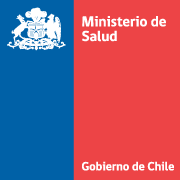Applying Modeling to Improve Health and Economic Policy Decisions in the Americas: The Case of Noncommunicable Diseases
In the Region of the Americas, noncommunicable diseases (NCDs) are a clear threat not only to human health, but also to a country’s economic development and growth. The evidence on both of these counts is compelling. In 2012, cardiovascular disease, diabetes, cancers, chronic respiratory conditions including asthma, and other NCDs were the cause of 4.5 million deaths in the Americas. Of that total number, 1.5 million of them were premature, occurring among people aged 30-69 years. The financial impact of NCDs in the Americas is just as dismaying, with chronic diseases posing a growing threat to many nations’ economic stability.
According to a 2007 Lancet article, without intensified NCD prevention efforts, countries around the world could expect their gross domestic product (GDP) to decline by billions of dollars. Over the 2006-2015 period, from just three chronic illnesses—heart disease, stroke, and diabetes—the countries of Argentina, Brazil, Colombia, and Mexico together could face a cumulative combined GDP loss of US$ 13.5 billion […]
This publication, Applying Modeling to Improve Health and Economic Policy Decisions in the Americas: The Case of Noncommunicable Diseases is the product of this collaboration. The text is the first to exclusively present different economic models and illustrate their application to NCDs in the Region of the Americas. It aims to stimulate the use of economic modeling as a tool to support the decision-making process for NCD interventions, and to encourage investment in cost-effective strategies for healthy living and NCD prevention in the Region. The book introduces several models for assessing health and economic policies in relation to NCDs; shows how the models can be used for different diseases or risk factors; and provides case studies of those models’ application in various countries in the Americas. The ultimate goal is to help policymakers find the best strategies for cost-effective and evidence-based NCD interventions.
